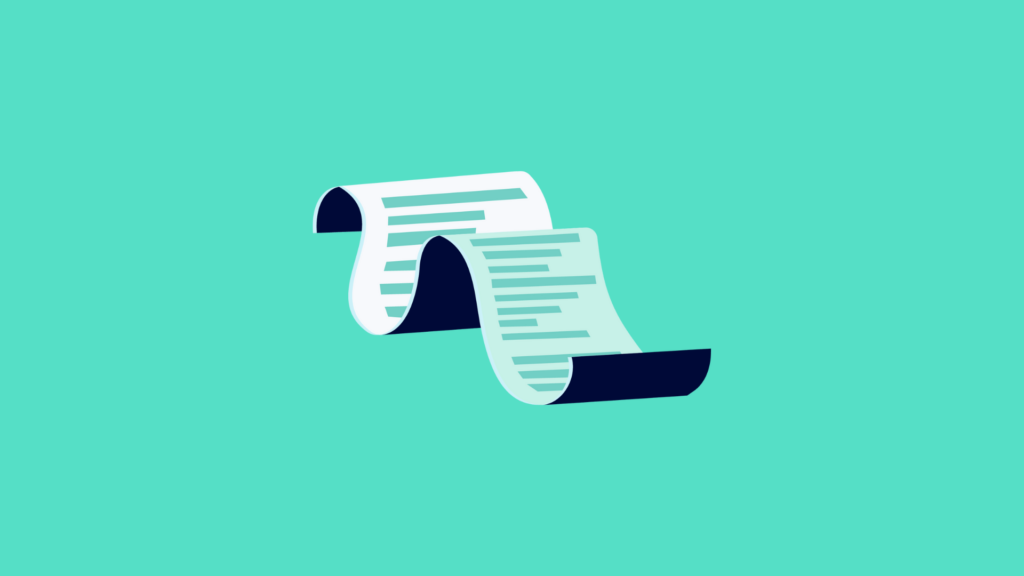- Understanding Customer Journey Mapping and Its Importance
- Industry-Specific Customer Journey Mapping: eCommerce, SaaS, Travel & Hospitality
- Role-Specific Customer Journey Mapping: Marketing, CRO, Product Managers
- Tools and Techniques for Effective Customer Journey Mapping
- Case Studies and Real-World Examples
Mapping the customer journey is an essential strategy for businesses looking to understand user behaviors, identify pain points, and optimize touchpoints for better engagement and conversions. When customer journey mapping is tailored to specific industries and roles, it becomes even more powerful, as it addresses unique needs and challenges across different contexts. This guide provides insights into how eCommerce, SaaS, and Travel and Hospitality businesses can use journey mapping effectively, along with actionable tips for marketers, CRO specialists, and product managers.
Understanding Customer Journey Mapping and Its Importance
Customer journey mapping is the process of visually outlining the steps users take on your website, from first discovering your brand to becoming loyal advocates. It provides a data-driven approach to improving user experience, increasing conversion rates, and boosting customer retention. By identifying user touchpoints and pain points, journey mapping helps businesses refine each interaction for greater impact.
Industry-Specific Customer Journey Mapping: eCommerce, SaaS and Travel & Hospitality
Different industries have distinct user behaviors, motivations, and challenges. Tailoring your customer journey map to your industry ensures that each stage of the journey is optimized for those unique needs.
eCommerce
Common Challenges: eCommerce businesses often struggle with cart abandonment, product discovery, and creating a smooth path to purchase.
Key Journey Stages:
- Awareness: Attract users through SEO, social media, and influencer marketing to increase brand visibility.
- Consideration: Optimize product pages with high-quality images, reviews, and product comparisons to aid decision-making.
- Decision: Simplify the checkout process to reduce friction, using trust signals like secure payment icons.
- Retention: Engage customers post-purchase with loyalty programs and personalized recommendations.
Example Strategy: An eCommerce brand can use Mouseflow’s session recordings and heatmaps to observe user interaction on product pages and identify high-drop-off points. By implementing changes based on these insights, such as adding a size guide or simplifying navigation, brands can potentially increase add-to-cart rates by up to 15%, as commonly observed in optimized eCommerce sites.
SaaS
Common Challenges: For SaaS, key challenges include improving user onboarding, converting free trials to paid subscriptions, and increasing product retention. Check out our SaaS Customer Journey Mapping guide.
Key Journey Stages:
- Awareness: Use educational content like blogs, webinars, and case studies to build authority and attract potential clients.
- Consideration: Offer product demos and detailed feature descriptions to help users evaluate your software.
- Decision: Provide a seamless sign-up experience and allow free trials to reduce barriers to entry.
- Retention: Implement customer success programs and personalized onboarding to keep users engaged with the product.
Example Strategy: A SaaS company can leverage Mouseflow’s journey mapping and funnel tools to track where users drop off during onboarding. CXL notes that simplifying onboarding flows or adding in-app guidance can improve trial-to-paid conversions significantly—sometimes by 20% or more, based on their case studies.
Read about the 12 Best SaaS Marketing Strategies for Growth
Travel and Hospitality
Common Challenges: Travel and hospitality brands face challenges in optimizing booking paths, upselling opportunities, and engaging users post-booking.
Key Journey Stages:
- Awareness: Use SEO and social media to attract users looking for travel inspiration and options.
- Consideration: Highlight amenities, reviews, and nearby attractions to create compelling reasons for users to book.
- Decision: Simplify the booking process, with clear pricing and available options to reduce friction.
- Retention: Engage guests post-booking with personalized itineraries, loyalty rewards, and local recommendations.
Example Strategy: Travel brands can use Mouseflow’s heatmaps to identify which features on the booking page attract the most engagement, allowing them to adjust placement for higher conversions. According to HubSpot, optimizing these engagement points on booking pages can increase completed bookings by up to 10%.
Learn more on how to improve the B2B Customer Journey.
Role-Specific Customer Journey Mapping: Marketing, CRO, Product Managers
Journey mapping also varies depending on the professional role involved. Here’s how journey mapping can provide unique benefits for marketers, CRO specialists, and product managers.
For Marketers
Primary Goals: Improve campaign performance, drive content engagement, and boost conversion rates.
Journey Mapping Tactics:
- Campaign Performance: Use journey mapping to track user interactions from ad clicks to conversions, helping you evaluate which campaigns drive the highest quality traffic.
- Content Engagement: Identify high-engagement content and refine messaging to guide users further down the funnel.
- Conversion Tracking: Map user flows to pinpoint which pages or channels convert best, optimizing campaigns accordingly.
Example Strategy: Marketers can use Mouseflow’s heatmaps and session replays to see how users interact with landing pages from campaigns, identifying which content and CTAs generate the most engagement, similar to insights shared in CXL’s customer journey studies.
For CRO Specialists
Primary Goals: Reduce friction points, improve user flow, and increase conversion rates.
Journey Mapping Tactics:
- Identify Bottlenecks: Map out user flows to see where conversions drop off, such as during checkout or form completion.
- Optimize User Flow: Use Mouseflow’s journey mapping to analyze paths with high drop-offs and test improvements to reduce friction.
- Improve CTAs: Refine CTAs based on engagement patterns to make them more compelling and accessible.
Example Strategy: CRO specialists can use Mouseflow’s conversion funnels to track specific user paths, identifying points where users are most likely to abandon their journey. A/B testing variations of these pages can then help optimize conversion. Statista notes that CRO testing on critical pages can improve overall conversion rates by 5-10%.
Source: Statista
For Product Managers
Primary Goals: Improve feature discovery, enhance onboarding, and increase user retention.
Journey Mapping Tactics:
- Drive Feature Discovery: Use journey mapping to see if users are navigating to key product features. Adjust design or add tutorials to encourage discovery.
- Optimize Onboarding: Track user behavior during the onboarding process to ensure users understand core features.
- Increase Retention: Identify where users may become inactive and develop re-engagement strategies, such as personalized tutorials or tips.
Example Strategy: Product managers can use Mouseflow’s session replays to watch how new users engage with the product’s onboarding flow, identifying where users may need additional guidance. HubSpot’s journey mapping guides highlight that simplifying onboarding steps can boost retention rates significantly.
Tools and Techniques for Effective Customer Journey Mapping
Journey mapping is made significantly easier and more precise with the right tools, such as Mouseflow. By using a combination of quantitative and qualitative data, Mouseflow provides actionable insights to improve user journeys across industries and roles.
- Mouseflow’s Journey Mapping Tool: Track user interactions across the website, visualizing each step from entry to conversion. The tool helps you understand key behaviors, identify drop-off points, and refine touchpoints.
- Session Replay: Watch real-time interactions to see how users navigate the site, uncovering friction points and common behaviors.
- Heatmaps: Visualize where users click and scroll, helping you identify high- and low-engagement areas.
- Conversion Funnels: Follow user paths to see where they drop off, allowing you to pinpoint and address obstacles in the journey.
- Customizable Surveys: Capture qualitative insights by asking users about their experience at different journey stages, allowing you to gather feedback for further improvements.
Case Studies and Real-World Examples
eCommerce Example
- A clothing retailer used Mouseflow to track user behavior on product pages, identifying a high drop-off rate at the size selection step. After adding a size guide and simplifying the page design, the brand saw a 15% increase in add-to-cart rates.Source: Mouseflow Success Stories
SaaS Example
- A project management SaaS company tracked trial users’ onboarding steps and found that users were struggling with feature setup. By adding a guided tutorial, the company increased trial-to-paid conversions by 17%.
Source: Optimizing the Free Trial Signup – How Flow Got a 17% Lift [Case Study]
Travel and Hospitality Example
- A hotel chain used Mouseflow’s heatmaps to analyze engagement on their booking page. By adjusting the placement of room and amenity details, they saw a 10% increase in completed bookings, illustrating the power of journey mapping in optimizing booking flows and boosting conversions.
Source: HubSpot Customer Journey Mapping
Conclusion
Tailoring customer journey mapping to your industry and role is essential for making impactful, data-driven decisions. By identifying key touchpoints, optimizing interactions, and reducing friction at each journey stage, businesses can improve user engagement, boost conversions, and foster loyalty. Mouseflow’s powerful suite of tools—including journey mapping, heatmaps, and session recordings—provides essential insights for refining each phase of the customer journey.


